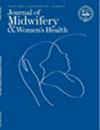The Role of Passive Descent and Epidural Analgesia in Outcomes Associated With Prolonged Pushing Among Nulliparous Individuals in Midwifery Care
Abstract
Introduction
Efforts to reduce primary cesarean birth may include supporting longer second stages of labor. Although midwifery-led care is associated with lower cesarean use, little has been published on associated outcomes of prolonged second stage (≥3 hours of pushing) for nulliparous individuals in US hospital-based midwifery care. Epidural analgesia and the role of passive descent in midwifery-led care are also underexplored in relation to the second stage. In this study, we report the incidence of prolonged second stage stratified by epidural analgesia and/or passive descent. Secondary aims included calculating the odds of cesarean birth, obstetric anal sphincter injury (OASI), postpartum hemorrhage (PPH), and neonatal complications.
Methods
Data were collected prospectively from a single academic center in the United States from 2012 through 2019. Our cohort analysis of labors attended by midwives for nulliparous, term, singleton, and vertex pregnancies included both descriptive and inferential statistics comparing outcomes between prolonged versus nonprolonged pushing groups. We stratified the sample and quantified second stage outcomes by epidural analgesia and by use of passive descent.
Results
Of the 1465 births, 17% (n = 247) included prolonged pushing. Cesarean ranged from 2.2% without prolonged pushing to 26.7% with prolonged pushing. Fetal malposition, epidural analgesia, and longer passive descent were more common among those with prolonged active pushing. Despite these factors, neither odds for PPH nor poor neonatal outcomes were associated with prolonged pushing. Those with more than one hour of passive descent in the second stage who also had prolonged active pushing had lower odds for cesarean but higher odds for OASI relative to those who had little passive descent before pushing for more than 3 hours.
Discussion
Prolonged pushing occurred in nearly 2 of 10 nulliparous labors. Fetal malposition, epidural analgesia, and prolonged pushing were commonly observed with longer passive descent, cesarean, and OASI. Passive descent in these data likely reflects individualized midwifery care strategies when pushing was complicated by fetal malposition or other complexities.

 求助内容:
求助内容: 应助结果提醒方式:
应助结果提醒方式:


